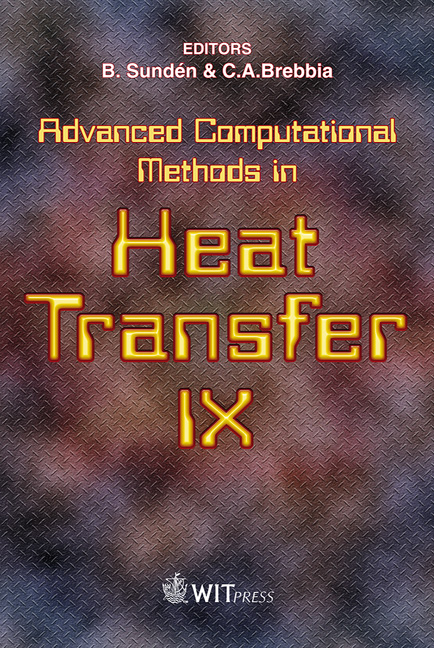Experimental Study Of Water Evaporation From Nanoporous Cylinder Surface In Natural Convective Airflow
Price
Free (open access)
Transaction
Volume
53
Pages
10
Published
2006
Size
491 kb
Paper DOI
10.2495/HT060451
Copyright
WIT Press
Author(s)
S. Hara
Abstract
Unglazed porous cylinders were used to study experimentally the evaporation features of water from the cylinder surfaces in natural convective airflows. Seto semi-porcelain clay No.6 was employed to make the unglazed porous cylinders. The firing temperature was changed from 773 to 1523 K to regulate the pore size of the porous. The diameter was from 80 to 85 mm, the thickness 7 mm, and the span 290 mm. The experiment was made at constant air temperature and the relative humidity. The air temperature ranged from 284 to 297 K and the relative humidity from 40 to 72%. The firing temperature had little effects on the evaporation characteristics. The evaporation rates were always 2.5 to 4 times as high as those of non-porous cylinders. The Grashof number, which shows macroscopic natural convection, did not have any appreciable effects on the evaporation. The evaporation rates were affected by the ambient temperature and relative humidity. Therefore, the following two conclusions were acquired: the evaporation on the nanoporous walls should be largely taken into account with the interaction between water and surface molecules which determines the evaporation energy of molecules, and the nanoporous does not consist of the pores among particles of the semi-porcelain, but of the nanoscale pores of a particle. Keywords: water evaporation, natural convection, nanoporous surface, unglazed semi-porcelain cylinder, molecular interaction, firing temperature, nanoscale pore, experiments, air temperature, relative humidity.
Keywords
water evaporation, natural convection, nanoporous surface,unglazed semi-porcelain cylinder, molecular interaction, firing temperature,nanoscale pore, experiments, air temperature, relative humidity.





